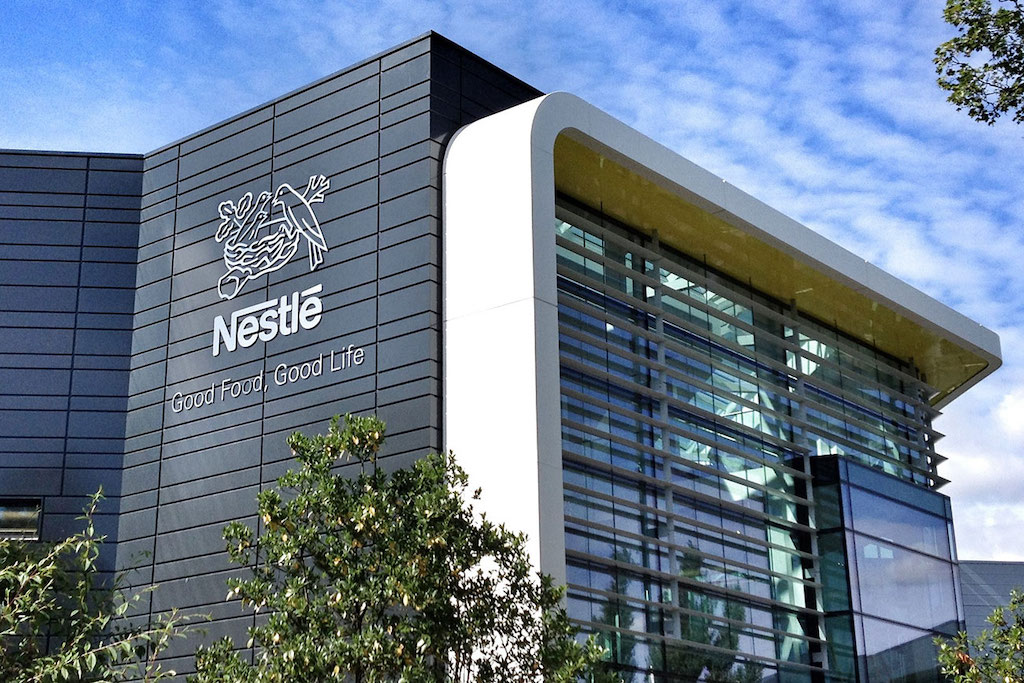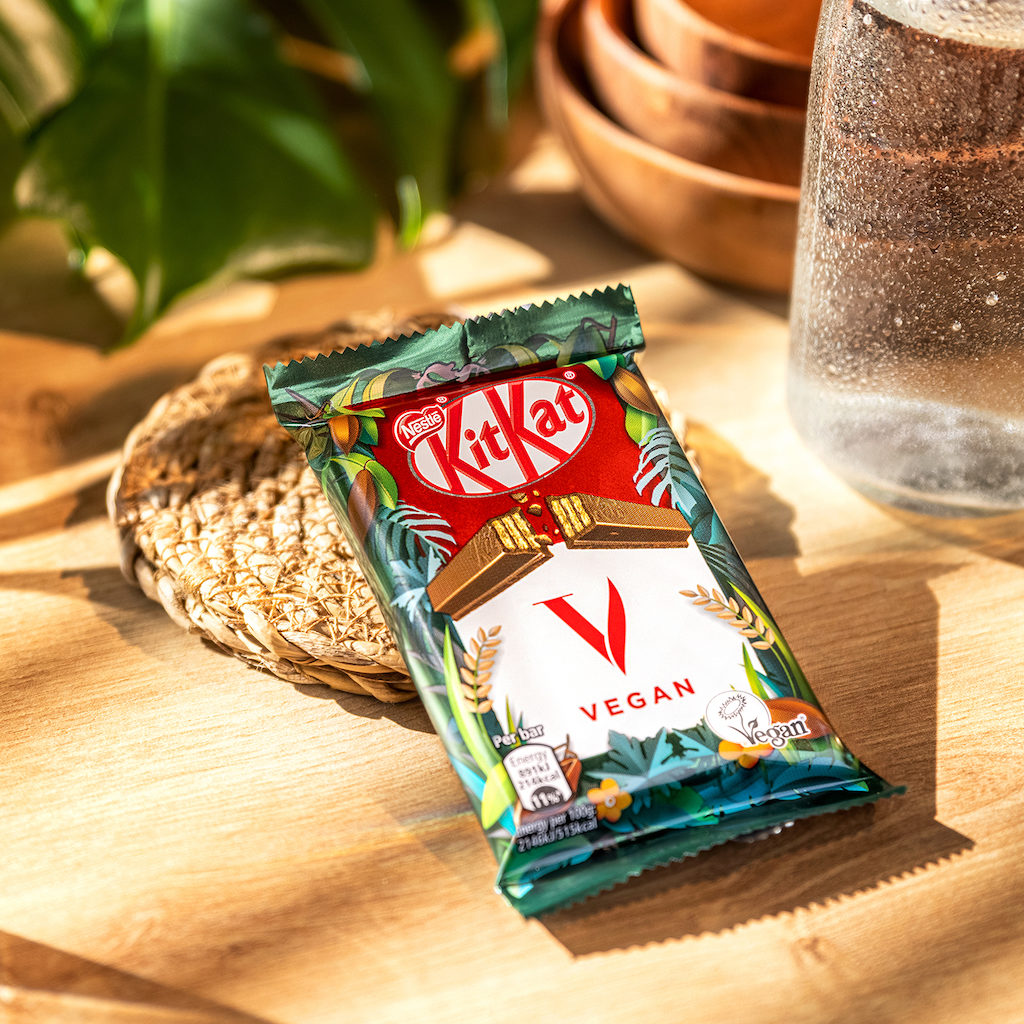4 Mins Read
Worldwide, more than 17 billion KitKat bars are sold every single year. That equates to 560 KitKats being eaten per second. So when Nestlé finally develops a 100% vegan version of the famous wafer chocolate bar, it’s a huge deal. We called up Nestle to get more details on how it managed to create the animal-product-free alternative.
The KitKat, popular the world over with consumers, is a chocolate bar that has eluded many competitors. In a 2019 Guardian report, German discount supermarket giant Aldi, famous for creating its own white label version of popular consumer food brands including Mars and Snickers bars, admitted that there are only two products on its shelves that it is unable to make in-house, despite significant R&D investment: Coca-Cola and KitKat chocolate bars.
Of course, we wanted to know more. That’s why we recently called up the Swiss food giant to ask them exactly how they managed to recreate their iconic KitKat without any animal products. The new vegan bars are now already on shelves across the U.K. and several European markets, and will soon land in Australia and Brazil too.
But it wasn’t an easy road to get there, says Nestlé senior corporate spokesperson Michael Jennings.
Making milk chocolate without milk
The biggest obstacle during R&D, according to Jennings, was recreating the milky taste and creamy texture of the original KitKat.
“Removing the milk was the biggest challenge making the bar,” he told Green Queen Media. “Milk really contributes to the smooth chocolate in the original bar that combines so well with the iconic crisp wafer, so we had to make sure we got that right.”

Removing the milk was the biggest challenge making the bar.
Michael Jennings, Senior Corporate Spokesperson, Nestlé
What food scientists at Nestlé’s confectionery research centre in York did was replace milk with a rice-based alternative. They combined it with cocoa butter, wheat flour, corn fibre, rice syrup, vegetable-based fats, sunflower lecithin and natural vanilla flavourings.
It took a really long time. In total, the entire process of developing KitKat V took the team just over 12 months. “This took a little longer than a year,” said Jennings. “We took longer with this one to make sure it was right.”
On the supply chain side, Jennings said things went smoothly because “we have a strong supply chain”, with key ingredients sourced as sustainably as possible. The cocoa hails from Nestlé Cocoa Plan and is certified by the Rainforest Alliance, while the palm oil is RSPO certified.
When asked about any ingredient challenges, Jennings said that “there is always a certain process of development, but we can’t reveal any of our secrets” and added that “we continue to explore a variety of plant-based alternatives for different products”.
Vegan KitKat: the most requested from consumers
Nestlé’s decision to make a 100% plant-based version of KitKat came down to consumer demand. It’s the CPG’s most popular brand, after all.
“We have other much-loved brands but KitKat is our most popular confectionery worldwide,” explained Jennings. “It was first introduced more than 80 years ago and is now present in over 80 countries.”
“The shape, the brand name and logo, the ‘Have a break, have a KitKat’ strapline and the perfect combination of smooth chocolate and crisp wafer have indeed given it iconic status around the world.”
Alexander von Maillot, head of confectionery at Nestlé, added that as plant-based became increasingly mainstream, more of their consumers were asking for a vegan KitKat. “One of the most common requests we see on social media is for a vegan KitKat, so we’re delighted to be able to make that wish come true.”
KitKat is our most popular confectionery worldwide.
Michael Jennings, Senior Corporate Spokesperson, Nestlé

Tapping the flexitarian market
While the Vegan Society certified product is clearly appealing to the growing numbers of plant-based folk, Nestlé is clear that its new vegan chocolate bar is for people practicing all diets. Especially flexitarians, who now make up a whopping 42% of the global consumer base.
“This is for everyone who wants a little more plant-based in their life when they treat themselves,” said von Maillot.
Jennings says that the company is bullish on the future of plant-based, and that plans are underway to launch the bar in more markets. “We hope that KitKat V is a success and that we can bring it to people in more countries,” he told Green Queen Media.
Over the past months, Nestlé has ramped up its plant-based offerings. Examples include new pea-based milk line named Wunda and vegan tuna alternative Sensational Vuna. Last year, the firm set aside over US$3.5 billion to fund more plant-based innovation and regenerative agriculture projects.
All images courtesy of Nestlé.




